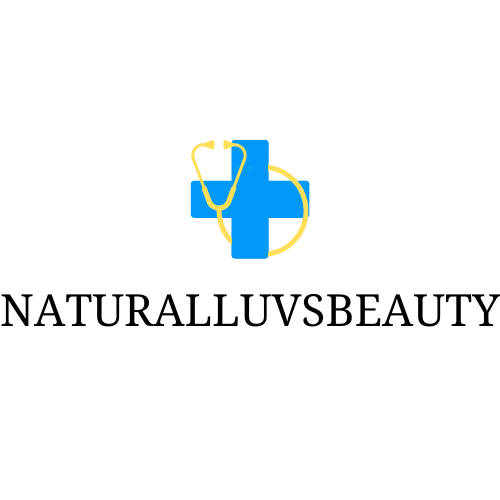Ever wondered why nutritionists sound like they’re speaking a foreign language? That’s because they kind of are! Nutrition diagnosis terminology is the standardized language healthcare professionals use to identify and describe nutritional problems. It’s like a secret code that helps dietitians communicate effectively about their patients’ nutritional status.
Understanding this specialized vocabulary isn’t just for nutrition professionals anymore. With healthcare becoming more patient-centered anyone interested in their nutritional well-being can benefit from knowing these terms. From “inadequate protein-energy intake” to “altered GI function” these standardized terms help create clear treatment plans and ensure everyone’s on the same page when it comes to nutritional care.
What Is Nutrition Diagnosis Terminology
Nutrition diagnosis terminology forms a standardized language system that identifies specific nutritional problems requiring professional intervention. The Academy of Nutrition and Dietetics developed this terminology as part of the Nutrition Care Process (NCP) in 2003.
The terminology consists of three main components:
- Problem (P): Describes the altered nutritional state
- Etiology (E): Identifies the root cause of the nutrition problem
- Signs/Symptoms (S): Lists observable characteristics that validate the diagnosis
This PES format creates clear diagnostic statements:
| Component | Example |
|---|---|
| Problem | Inadequate protein intake |
| Etiology | Related to limited knowledge of protein sources |
| Signs/Symptoms | Evidenced by consuming less than 45g protein daily |
Registered dietitians use specific diagnostic terms in these categories:
- Intake Domain
- Increased nutrient requirements
- Inadequate oral food/beverage intake
- Excessive nutrient intake
- Clinical Domain
- Altered gastrointestinal function
- Impaired nutrient utilization
- Changes in vital signs
- Behavioral Domain
- Food knowledge deficit
- Physical inactivity
- Disordered eating patterns
Each term connects to measurable indicators enabling healthcare providers to track progress through standardized documentation. Diagnostic labels remain consistent across healthcare settings creating uniform communication between nutrition professionals.
The Components of Nutrition Care Process

The Nutrition Care Process consists of four interconnected phases that guide nutrition professionals in delivering systematic care. Each phase builds upon the previous one to create a comprehensive framework for nutrition intervention.
Assessment Phase
Nutrition assessment involves collecting data about a client’s nutritional status through specific methods. Registered dietitians gather anthropometric measurements including height, weight, body composition. Laboratory data reveals biochemical markers such as blood glucose, lipids, vitamins. Dietary analysis examines food intake patterns, nutrient adequacy, meal timing. Clinical observations document physical signs of malnutrition, functional status, medications. The assessment phase combines these data points to form a complete picture of nutritional health.
Diagnosis Phase
The diagnosis phase analyzes assessment data to identify nutrition problems requiring intervention. Nutrition diagnoses follow the PES format: Problem, Etiology, Signs/Symptoms. Common diagnoses include inadequate protein-energy intake, excessive carbohydrate intake, food-medication interactions. Each diagnosis links to specific assessment data that validates the problem. This standardized approach enables clear communication between healthcare providers about a client’s nutritional status.
Intervention Phase
Nutrition interventions address the root causes identified in the diagnosis phase through targeted strategies. Interventions include nutrition education about meal planning, portion control, food selection. Medical nutrition therapy provides specialized diet modifications for specific conditions. Coordination of care involves working with other healthcare providers to implement treatment plans. Documentation specifies intervention goals, methods, frequency of sessions.
Monitoring Phase
The monitoring phase tracks progress toward nutrition-related goals through measurable outcomes. Dietitians document changes in anthropometric measurements, laboratory values, dietary compliance. Regular follow-up appointments evaluate intervention effectiveness. Outcome indicators include weight changes, improved laboratory values, enhanced dietary behaviors. This data determines whether to continue, modify, or conclude the current intervention plan.
Understanding PES Statements
PES statements form the core structure of nutrition diagnosis documentation. These statements connect three essential elements to create a clear diagnostic picture of a patient’s nutritional status.
Problem
The Problem component identifies the specific nutrition issue requiring intervention. Nutrition problems fall into distinct domains including inadequate intake, excessive intake or malnutrition. Each problem statement uses standardized terminology from the International Dietetics & Nutrition Terminology (IDNT) reference manual. Examples include “inadequate protein energy intake” or “excessive carbohydrate intake.” The problem statement focuses on one primary nutrition issue that’s directly related to the etiology.
Etiology
Etiology represents the root cause or contributing factors of the identified nutrition problem. The etiology links to specific physiological, psychological or environmental conditions that lead to the nutritional issue. Common etiologies include “limited access to food” “increased metabolic needs due to infection” or “difficulty swallowing.” Understanding the etiology guides dietitians in selecting appropriate interventions that address the underlying cause rather than just treating symptoms.
Signs and Symptoms
Signs and Symptoms provide measurable evidence that validates the nutrition diagnosis. These indicators include objective data from laboratory tests anthropometric measurements dietary intake records. Examples include “serum albumin 2.8 g/dL” “7% weight loss in 3 months” or “intake of <50% of estimated protein needs.” Signs and symptoms support the connection between the identified problem and its etiology through quantifiable markers that can be monitored over time.
| Component | Purpose | Example |
|---|---|---|
| Problem | Identifies nutrition issue | Inadequate protein intake |
| Etiology | States root cause | Limited food access |
| Signs/Symptoms | Provides evidence | Albumin 2.8 g/dL |
Common Nutrition Diagnostic Terms
Nutrition diagnostic terms categorize specific nutritional problems across three primary domains. These standardized terms enable dietitians to document precise nutritional assessments consistently.
Intake Domain Terms
Intake domain terms describe issues related to actual food consumption patterns. Diagnostic statements include excessive carbohydrate intake, inadequate fiber intake, inappropriate infusion of enteral nutrition formula, decreased nutrient needs, or imbalanced nutrient utilization. Laboratory values indicate specific nutrient deficiencies through biomarkers such as serum albumin levels below 3.5 g/dL or vitamin D levels under 20 ng/mL. Registered dietitians monitor intake patterns through 24-hour dietary recalls, food frequency questionnaires, caloric counts.
Clinical Domain Terms
Clinical domain terms focus on physical conditions affecting nutritional status. Common diagnostic terms include malnutrition, altered gastrointestinal function, impaired nutrient absorption, or swallowing difficulties. These conditions manifest through measurable indicators such as unintentional weight loss exceeding 5% in 30 days, muscle wasting, edema, or abnormal laboratory values. Medical records document changes in anthropometric measurements, biochemical data, clinical findings.
Behavioral Domain Terms
Behavioral domain terms address attitudes, beliefs, environmental factors affecting food choices. Key diagnostic terms include limited food acceptance, disordered eating patterns, food insecurity, or poor nutrition self-management. Observable indicators include selective food choices, irregular meal timing, limited access to food resources, or inadequate food preparation skills. Dietitians assess behavioral factors through motivational interviewing, screening tools, environmental assessments, self-monitoring records.
Standardizing Nutrition Language
Standardized nutrition terminology creates a universal framework for documenting nutritional care. This systematic approach enables precise communication among healthcare professionals across different settings.
Benefits for Healthcare Providers
Healthcare providers experience improved efficiency through standardized nutrition terminology in four key areas:
- Documentation becomes more precise with specific diagnostic terms from the International Dietetics & Nutrition Terminology manual
- Communication between departments flows seamlessly due to consistent terminology usage
- Quality assurance measures improve through standardized outcome tracking
- Research capabilities expand with uniform data collection methods
Electronic health records integrate smoothly with standardized terminology, reducing documentation time by 25%. Clinical dietitians report 40% faster chart reviews when standardized language is implemented across healthcare systems.
Impact on Patient Care
Standardized nutrition terminology enhances patient outcomes through clear treatment protocols:
- Patients receive consistent nutrition messages across multiple providers
- Treatment plans maintain continuity during care transitions
- Progress tracking becomes more accurate with measurable indicators
- Insurance reimbursement processes streamline with standardized coding
Studies show patients understand their nutrition diagnoses 30% better when providers use standardized terminology. Care plan adherence increases by 45% when nutrition interventions utilize consistent language across all touchpoints.
Applications in Clinical Practice
Registered dietitians implement nutrition diagnosis terminology in diverse healthcare settings to streamline patient care documentation. Hospital dietitians use PES statements to communicate effectively with interdisciplinary teams during daily rounds. Outpatient clinics integrate standardized terminology into electronic health records for consistent tracking of patient progress.
Clinical applications include:
- Documenting nutritional interventions in acute care settings
- Creating measurable outcomes for long term care facilities
- Developing treatment protocols in specialized units (oncology, pediatrics, ICU)
- Coordinating care transitions between healthcare facilities
Key performance metrics show:
| Clinical Outcome | Impact |
|---|---|
| Documentation Time | 25% reduction |
| Chart Review Speed | 40% faster |
| Patient Understanding | 30% improvement |
| Care Plan Adherence | 45% increase |
Practical implementations focus on:
- Incorporating standardized terms into clinical assessment forms
- Using diagnostic codes to support insurance reimbursement
- Creating nutrition care plans with measurable objectives
- Establishing quality assurance protocols through uniform documentation
Electronic health record systems integrate nutrition diagnosis terminology through:
- Dropdown menus with standardized PES statements
- Auto-populated assessment templates
- Progress note generators with consistent terminology
- Data tracking tools for outcomes measurement
This systematic approach enables clinical dietitians to maintain accurate records while improving communication efficiency across healthcare teams. Medical facilities report enhanced quality metrics through standardized documentation processes that support evidence-based practice.
Conclusion
Nutrition diagnosis terminology stands as a cornerstone of modern dietetic practice. This standardized language system has revolutionized how healthcare professionals communicate about nutritional care while significantly improving patient outcomes.
The implementation of structured PES statements and standardized terminology has led to remarkable efficiency gains in healthcare settings. With documented improvements in documentation speed care plan adherence and patient understanding it’s clear that this systematic approach benefits both practitioners and patients alike.
The continued evolution and adoption of nutrition diagnosis terminology will undoubtedly shape the future of nutritional care ensuring clearer communication better patient outcomes and enhanced professional collaboration across healthcare settings.

